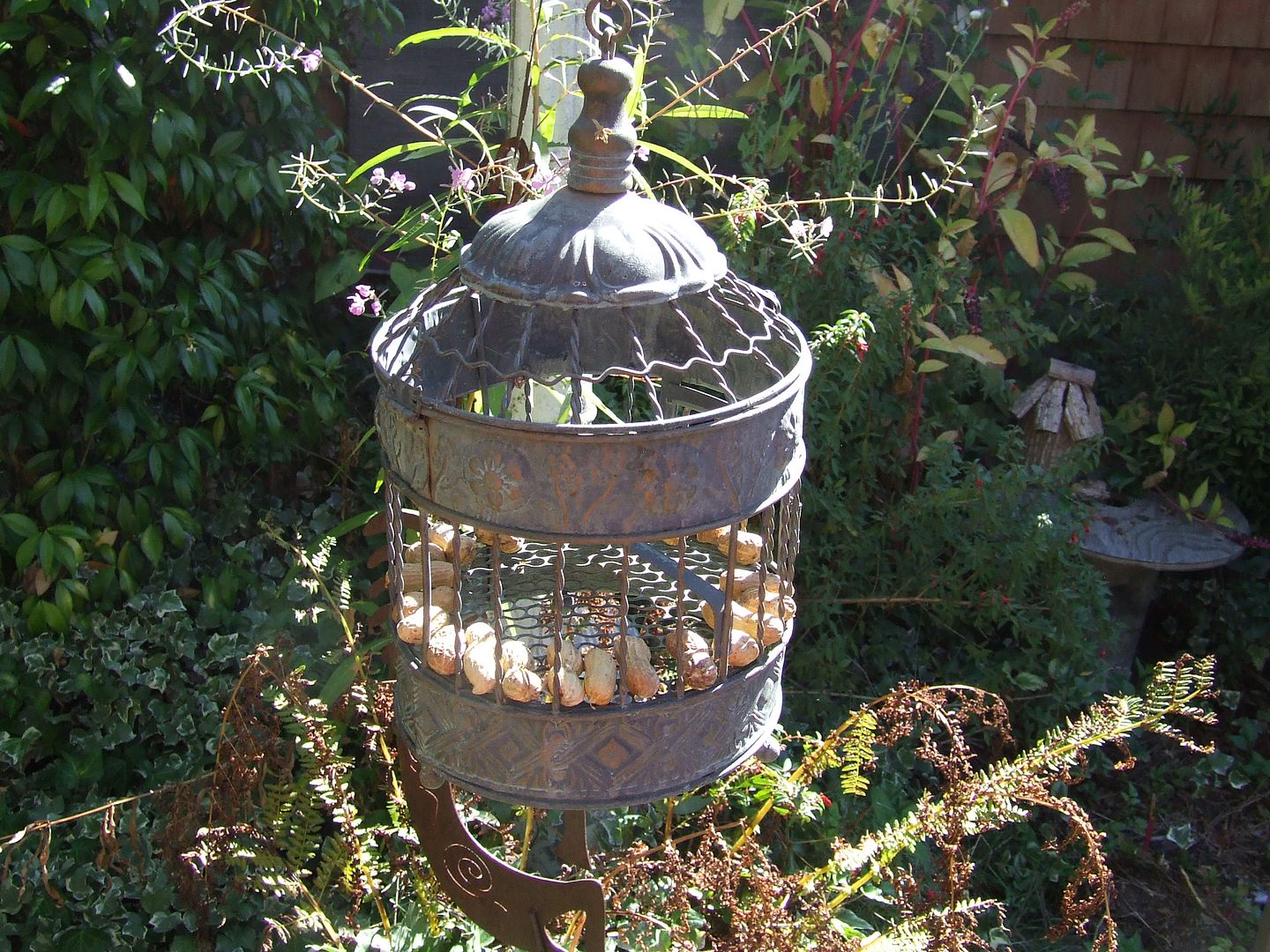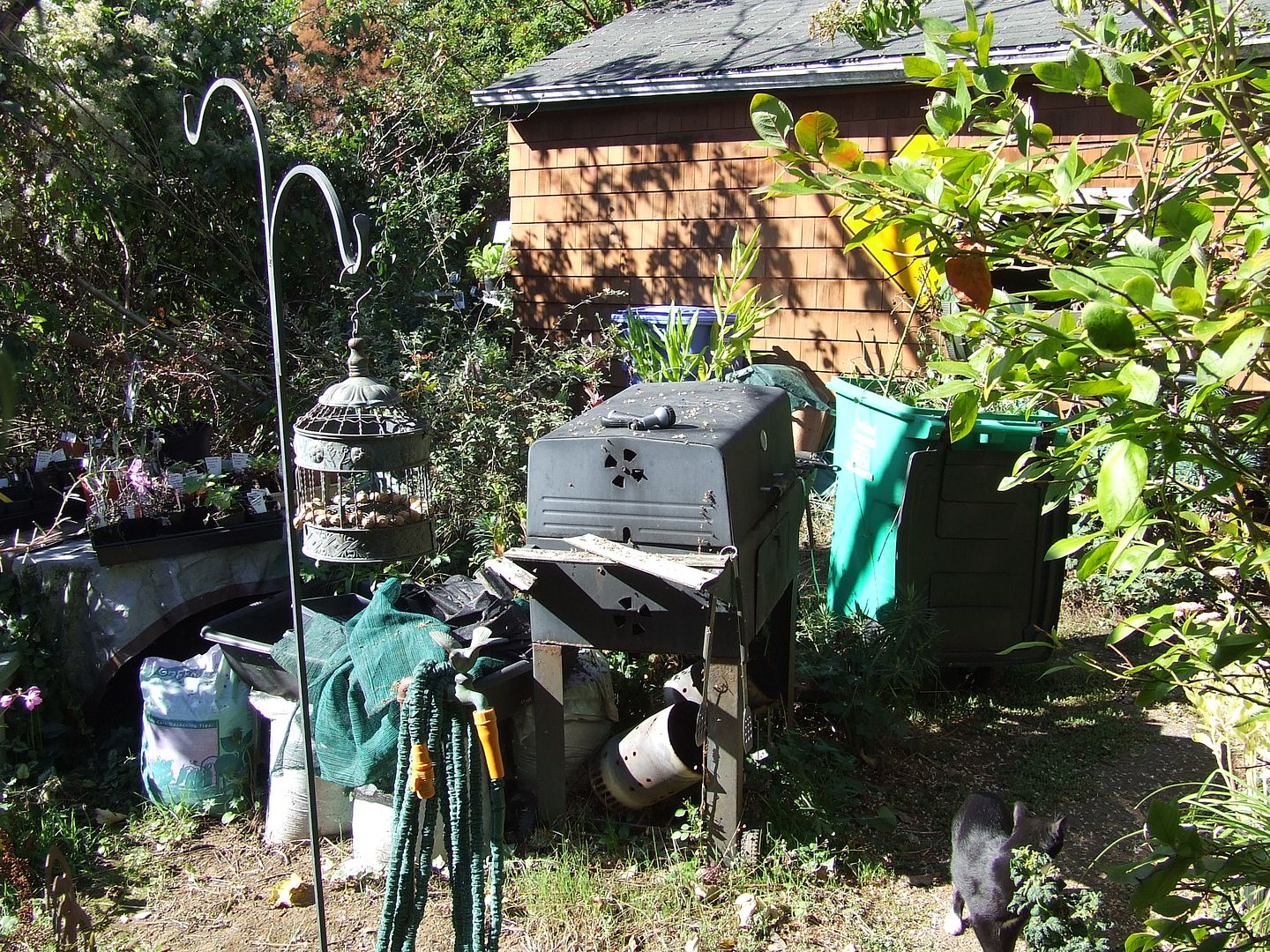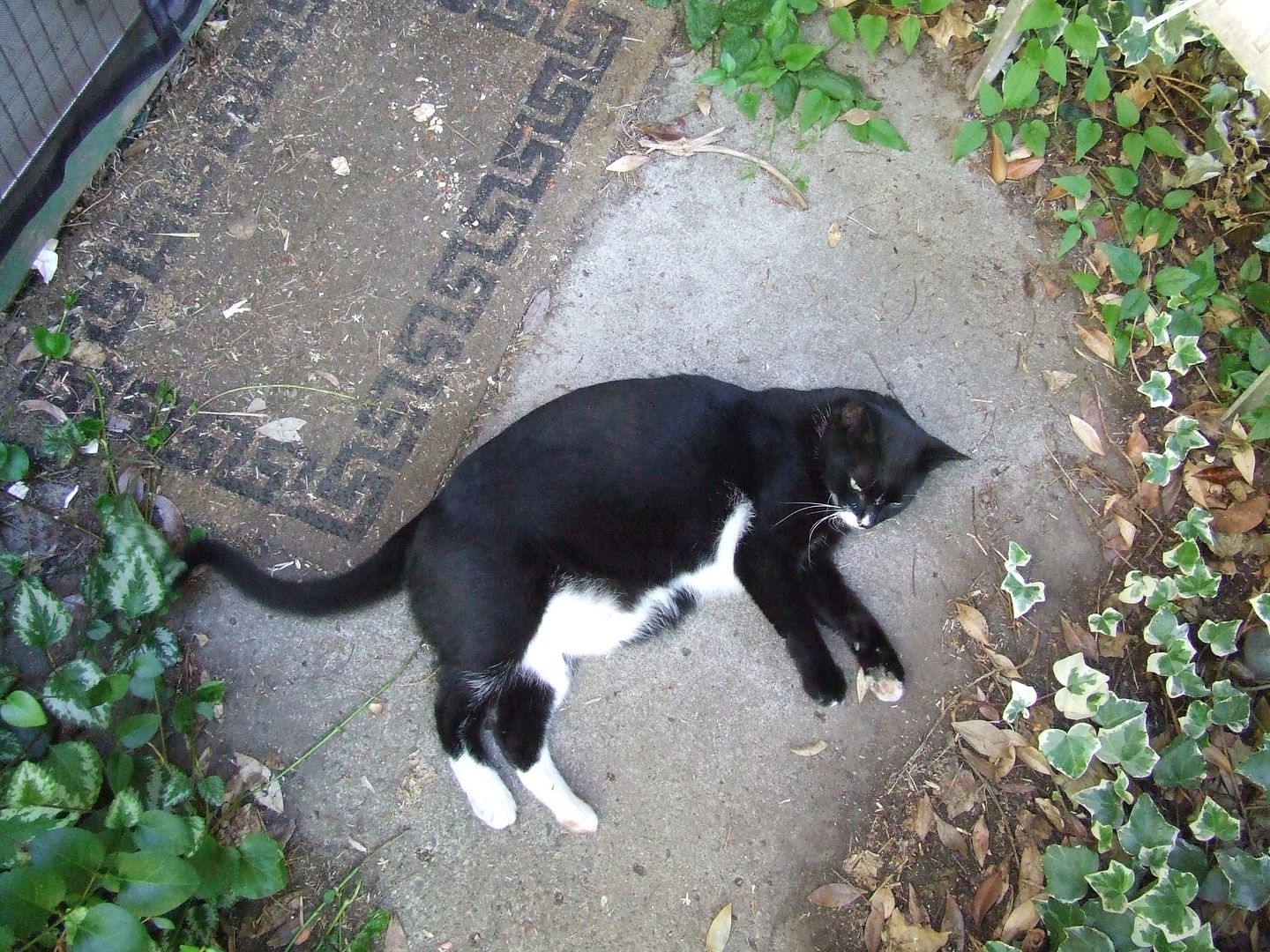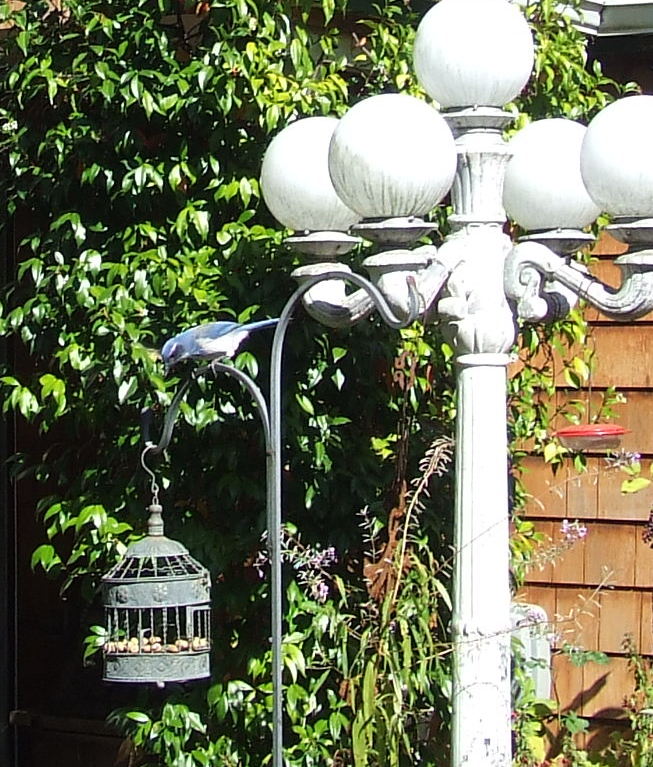A sauce, growing garlic, superhuman senses, and the reverse birdcage in The Amalgamated Aggromulator
- Sept. 15, 2016, 2:30 a.m.
- |
- Public
Something important to communicate - this recipe for a sauce I found online; it’s “served all over Latin America with roasted meats” . . .
“Creamy Cilantro-Lime Sauce
INGREDIENTS
2 large jalapeños, seeded and coarsely chopped
2 large garlic cloves, smashed
2 tablespoons minced fresh ginger
2 tablespoons minced white onion
1 tablespoon fresh lime juice
1/4 cup water
1 cup mayonnaise
1/4 cup finely chopped cilantro
Salt
INSTRUCTIONS
In a blender, puree the jalapeños, garlic, ginger, onion, lime juice and water until smooth. Add the mayonnaise and cilantro and pulse a few times. Season the sauce with salt and serve.
MAKE AHEAD
The sauce can be refrigerated for up to 3 days.”
So simple to make.
I had this sauce last week with a pork shoulder roast that I baked on low heat until I could just tug the big bone out of it - drizzled this sauce over shreds of the meat, alongside guacamole and chopped tomato and cucumber. AMAZING on the meat. It was a good evening.
A strange piece of advice about growing garlic.
We have been growing hardneck garlic in a raised bed, varieties that make huge cloves that are easy to work with - “Musik”, mostly, but some “German Red” and “Dugansky” too. Really good flavor, better than the garlic at the supermarket.
Well, things went well for a while, and then - for a couple of years running, we would plant in the fall, and then in the summer when half the leaves were dry and yellow we would harvest as usual . . . and the cloves would be extremely small. I mean the size of the nail on my pinky finger sometimes, or skinnier! My use of garlic in cooking dropped to a trickle, because those tiny things were so much of a pain to use and it took so many of them.
So last summer I went online and eventually found this strange advice: The later in the fall you plant your garlic, the bigger the cloves you’ll get come harvest.
This made no sense. The later in the fall you plant? Shouldn’t your garlic having more time to grow and build itself in the autumn make a bigger bulb? It should work the other way around!
We tried it last fall.
Good grief the cloves we got this summer were huge! Like jumbo cherries, like grapes! I’m back to happily putting as much garlic as I want in everything with no effort.
It still doesn’t make any sense. But it works.
Funny thing about cilantro. There are some people, like my friend Christy, for whom any recipe like the one above, that contains cilantro, is going to fall flat, in fact much worse than flat. Inedible.
They say that cilantro tastes like soap. And not a mild taste of soap - an overpowering taste. They can’t imagine why anyone would want to eat anything with that flavor.
The reason is that the people around them don’t taste that at all. The other people in the room experience something very mild and quite different.
It seems that the people who can’t stand cilantro - apparently between four and fourteen percent of the population - have a special group of genes related to the olfactory sense. These genes let their senses of taste and smell detect and react to certain aldehyde chemicals that are present in soap and in cilantro. The rest of us can’t smell or taste these particular aldehydes, though we can others like vanillin or cinnamaldehyde.
So my friend Christy doesn’t know, and can never know, how cilantro tastes to the rest of us who like it - she is unable to try what we experience eating . . .
. . . and, not only do I not know what cilantro tastes like to her, I cannot know what soap has always been like to her either. And the chemistry is real. A fundamental genuine reality of soap is going to remain forever beyond my ken.
(In the recipe above, just substitute Italian parsley if you don’t like cilantro.)
What is a reverse birdcage? (In my imagination someone just made an extremely ribald suggestion. No, man, get out of here, I don’t know you. That . . . doesn’t even make sense.)
This is a reverse birdcage.

The birds go on the outside.
My mother got this little brass cage at an antique store, and she hung it on one side of a big metal double-hook we have stuck in the ground near our front door, having put the double-hook there to hang a hummingbird feeder on the other side. So the cage has been just there as an art item.

One day I had some peanuts, which the jays like. Sometimes I’d throw the peanuts up on the sloping garage roof, where most of them would just roll right down and off, or more often I would put them in a little flower-cup on a pole out in the middle of the yard by the dahlia area. Commonly a jay would fly up onto a branch of the dead mimosa and give me the eyeball and I’d say “hold on” and go get some peanuts.
So, on this particular day I had a handful of peanuts, and I started putting peanuts in the cage. Right at the edge, in each gap between the bars all the way around.
The jays have loved this. They saw it right away. That ring of peanuts just glowed at them.
The original puzzled approach employed by these cautious birds was to zip down and try to hover next to the cage and grab a peanut, which was a very frenzied flurried event because jays do not actually hover, as they rediscovered and proved. They did grab a peanut about half the time during these explosive events that were really more of a very clumsy hairpin turn with a pause in it than a hover.
One approach that was briefly tried, I think only by one jay, was simplicity itself: the bird would just ram the cage. I hope he didn’t hurt himself too badly; the cage is not heavy, but jays are made of nothing. He must have ached afterward. The idea was to dump the peanuts on the path from the front door where they’d be simple to pick up. The problem was that the cage happens to be suspended above a big overflowing bowl-thing full of variegated ivy that has grown wide and deep, and all the peanuts that fell would disappear way, way down in the ivy. The jays aren’t going to try to dig down for them. They know my cat is here.

Finally the jays solved the matter. They first land up on the top of the hook-arrangement to get ready, and then they land on the top of the cage and they climb down to the side like parrots or monkeys, gripping with their feet, and take out a peanut with careful delicacy. Then they take off and streak away to hide the peanut in the crook of a tree or some such (if they see me looking at one they go back and get it and hide it better), and the cage dances a little from the takeoff but rarely does a peanut ever fall out to get lost in the ivy.
After they get my attention they are always very patient as they watch me pick peanut after peanut out of my handful and load all the gaps in the bars.
Anyway. That is a reverse birdcage.

Last updated September 15, 2016


